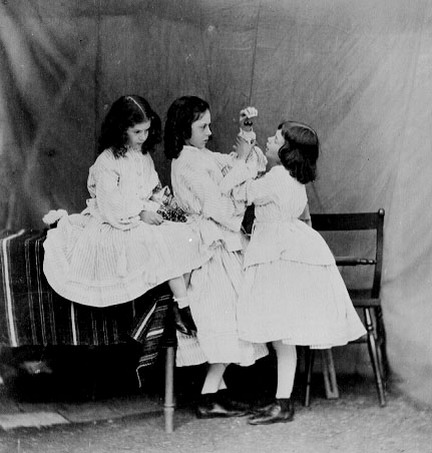
Figure 1 – “Open your mouth and close your eyes, 1860,” A portrait of the Liddell sisters Edith, Lorina, and Alice by Charles Dodgson (Lewis Carroll.” in the public domain in the United States and the United Kingdom.
I would guess that as we sat down at the Thanksgiving dinner table last Thursday, few of us realized the significance of the date November 26, 2015. It was, in fact, the 150th anniversary of the publication of Lewis Carroll’s (aka Charles Dodgson) publication of his historic masterpiece “Alice’s Adventures in Wonderland.” As we have discussed, Dodgson was also a pioneer of photography. So I thought that I would celebrate with Figure 1 – a delightful image of the Liddell children: Edith, Lorina, and Alice posing the phrase “Open your mouth and close your eyes.” It seems almost a candid moment, but, of course, was posed. Alice was the inspiration of the story. Indeed, Dodgson told it to her, and she was the one that insisted that he write it down.
It was fairly unique among Victorian story in that it does not appear to have a moral. Indeed, within the story the point is made:
“I can’t tell you just now what the moral of that is, but I shall remember it in a bit.’
‘Perhaps it hasn’t one,’ Alice ventured to remark.
‘Tut, tut, child!’ said the Duchess. ‘Everything’s got a moral, if only you can find it.'”
The first edition was illustrated by the drawings of John Tenniel. These form the basis for the magnificent photographic illustrations by photographer Abelardo Morrel, who made cutouts of the Tenniel drawings and created little settings that cleverly illustrate the text. You may consider, for instance, his illustration of the Cheshire Cat. Cheshire was the Duchess’ cat, and, of course, there is no such thing as a Cheshire cat – Cheshire cheese yes, but no Cheshire cat. Cheshire Cat is important in that he was the only one that listens to Alice. He is her guide, to the bizarre rules of Wonderland.
“`Cheshire Puss,’ [Alice] began, rather timidly, as she did not at all know whether it would like the name: however, it only grinned a little wider. `Come, it’s pleased so far,’ thought Alice, and she went on. `Would you tell me, please, which way I ought to go from here?’
`That depends a good deal on where you want to get to,’ said the Cat.
`I don’t much care where–‘ said Alice.
`Then it doesn’t matter which way you go,’ said the Cat.
`–so long as I get SOMEWHERE,’ Alice added as an explanation.
`Oh, you’re sure to do that,’ said the Cat, `if you only walk long enough.’”
Alice returns to a lazy summer’s afternoon. My mind is taken back to two delightful times: when I first read the book and when I first saw Morrel’s photographs. Both are fond memories.
